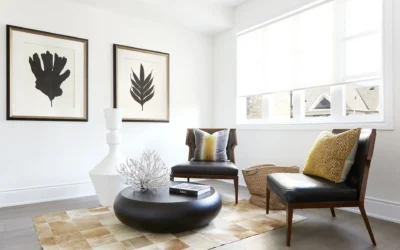You’re in your bedroom and you’re looking at the walls. The paint colour you loved so much when you moved in needs updating. You’ve removed the furniture and you’re ready to repaint. Don’t pick up that brush just yet. There are eight easy steps involved in repainting your walls.
- Clean the workspaceWith a sponge and water mixed with a small amount of mild dishwashing detergent give the walls a good clean. Make sure you rinse them afterwards to remove any soap residue.
- Protect the roomWith painter’s tape, cover the trim, windows, mouldings and doorframes. You should also cover any electrical outlet covers and switch plates, so you don’t get paint on them. Then, lay a sheet or canvas covering on the floor, ensuring that its entire surface is covered.
- Caulk and patchThis may not be necessary if your walls are in top condition. But if they’re not, you will have to patch up any holes before you paint. Using caulk, fill any breaks in the moulding. For holes in the wall, patch them up with drywall or plaster.
- Sand the surfaceSanding is essential because it helps paint go on evenly. With a pole-sander equipped with 120-grit sandpaper, sand the wall by moving it from side to side. Start at the top and work your way to the bottom. This creates small pores that allow the paint to spread more evenly.
- Prime the wallsNo matter how many times your walls have been repainted, they still need to be primed. Primer gives the wall a gorgeous sheen after it has been painted and allows the paint to be applied more uniformly.
- Brush and rollFor the most part, you’ll be using a roller to paint. Start in the corner and roll on a 3-foot by 5-foot W or M pattern. Fill the pattern in without lifting the roller and continue on to the next section. For tight areas like corners, use a brush instead of the roller.
- Play the waiting gameYou’ll have to wait several hours for the paint to dry.
- Paint the trimOnce the walls are dry, paint the mouldings and the door and window frames. Use a two-inch angled brush for the best results.
A second coat of paint may not be required. However, if it is necessary, you don’t have to repeat all the steps —just number six (brush and roll) should do the trick.




